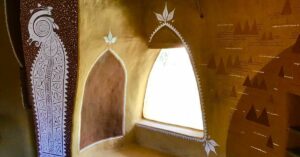Dipped in Memories: Bengaluru House Uses Old Debris, New Ideas For a Green Makeover
“Rapid urban expansion is taking a toll on our natural resources. These skewed notions of development floated by glamorous campaigns that make us believe that progress means a mindless increase in infrastructure, without a thought to the environment, is completely flawed. Each one of us needs to get closer to nature and understand that we can’t survive if we deplete natural resources.” #sustainablehomes
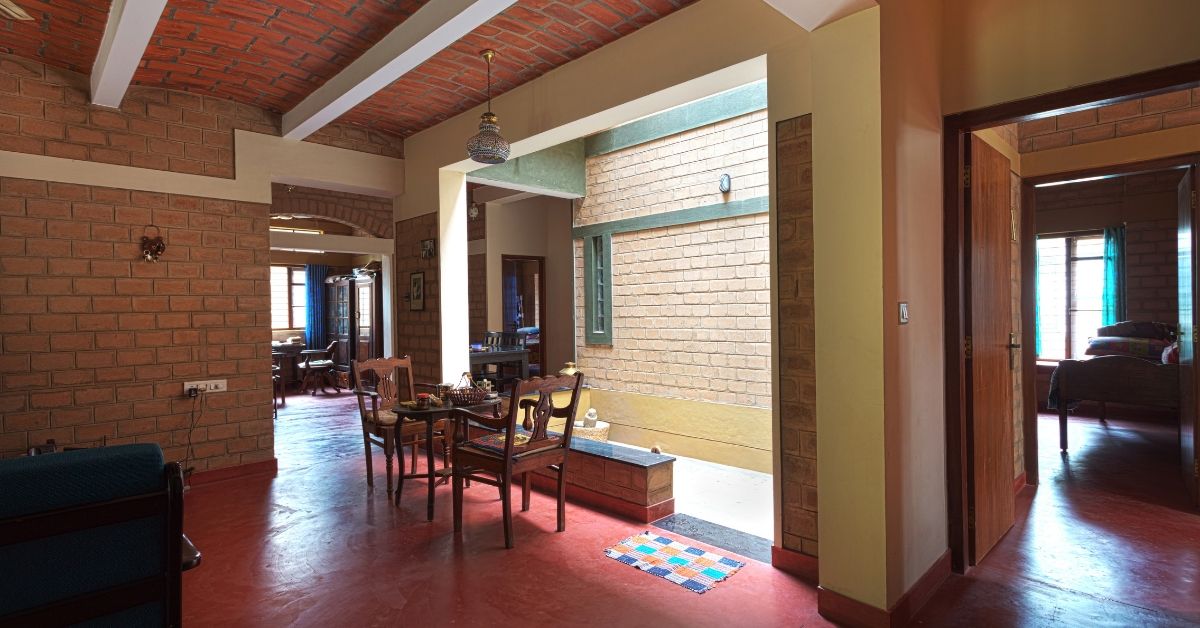
A cluster of bricks and wood arranged symmetrically and sealed into four strong walls with a roof on top, is not a home. It’s a house.
A home, on the other hand, is a reservoir of memories safely sealed within those walls. And, the Raghavans wanted to preserve just that and much more.
So when the cracks and wrinkles began to show on the walls, the family was caught in a dilemma. They did not want a complete makeover, a space devoid of a sense of nostalgia. They wanted to embrace the new while preserving the old just not in spirit but in substance too.
Thus began their journey with Sharath R Nayak, an architect at Biome Environmental Solutions, a Bengaluru-based design firm which specialises in creating ecologically sensitive and sustainable spaces.

Together, they designed a new home, that was to be built using most of the construction material from its predecessor. In other words, the project did not involve demolishing the old structure, but dismantling it, so that it could be used for the new house.
“Had it not been for the structural damages, we would not have dismantled the old house at all. When the time came to finally do it, we knew that it had to be in a way that reduced our carbon footprints to the maximum extent possible. Reusing the materials in construction should be a norm and not an exception,” says Shobha R, one of the daughters of Wing Commander KVP Raghavan (Retd) and Mythili Raghavan.
Located at the heart of Bengaluru, the house was spread across an area of 3500 square ft, which was a result of several extensions over time, to suit the needs of the family.
In the process, it had deteriorated, with symptoms of cracks, dampness and leakage surfacing now and then.

“The subsequent additions had reduced light and ventilation in the house, and multiple levels made it difficult for the elderly. The house didn’t suit the current lifestyle of the family, so they decided to build a new one in its place. But, they were also very sensitive to the fact that demolition would generate debris and wanted to reuse as much of the material from the old house as possible. This meant that the house would need to be dismantled, not demolished. The materials were then segregated and reused,” explains the architect, Sharath.
Taking it as a welcome challenge, Sharath, along with a design team, structural engineers and contractors, began the work.
The process of re-creation
From bricks from the old walls to concrete and even windows and doors, the design seamlessly utilised the remnants of the old house into the new.
But, the first step to do so was to have a strong foundation.

“When the old house was dismantled, the soil was found to be weak and low in bearing capacity. So to strengthen the base sustainably and economically, we decided to dig up wells and fill it up with the demolished concrete that was segregated and processed from the debris,” he informs us.
With the foundation in place, creating the walls was the next step.
“In a project like this, flexible planning works as you have to keep thinking and improvising on the go. So, for the walls, we decided on two approaches. One part was built using stones from the old foundation, and another part was built by plastering the old bricks. Brick walls in the old structure had been built with lime mortar, and easy to dismantle and reuse. Also, we reused granite slabs found in the old house to create staircase treads,” he says.
Even the doors and the windows from the previous structure, which were mostly made of high-quality teak wood, were repurposed.
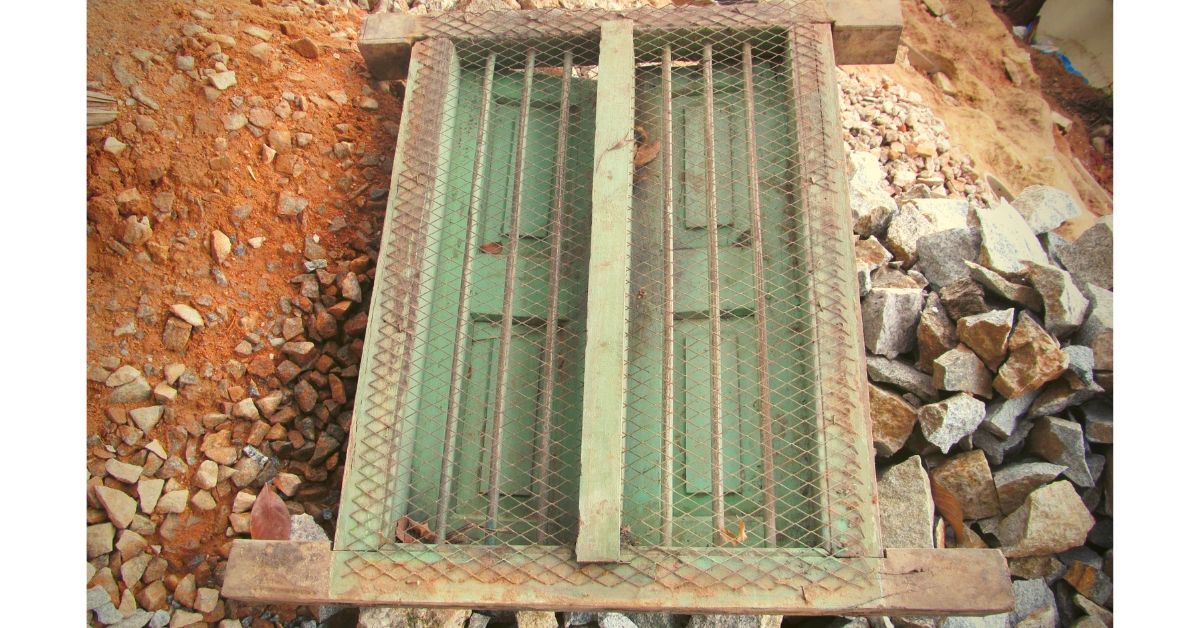
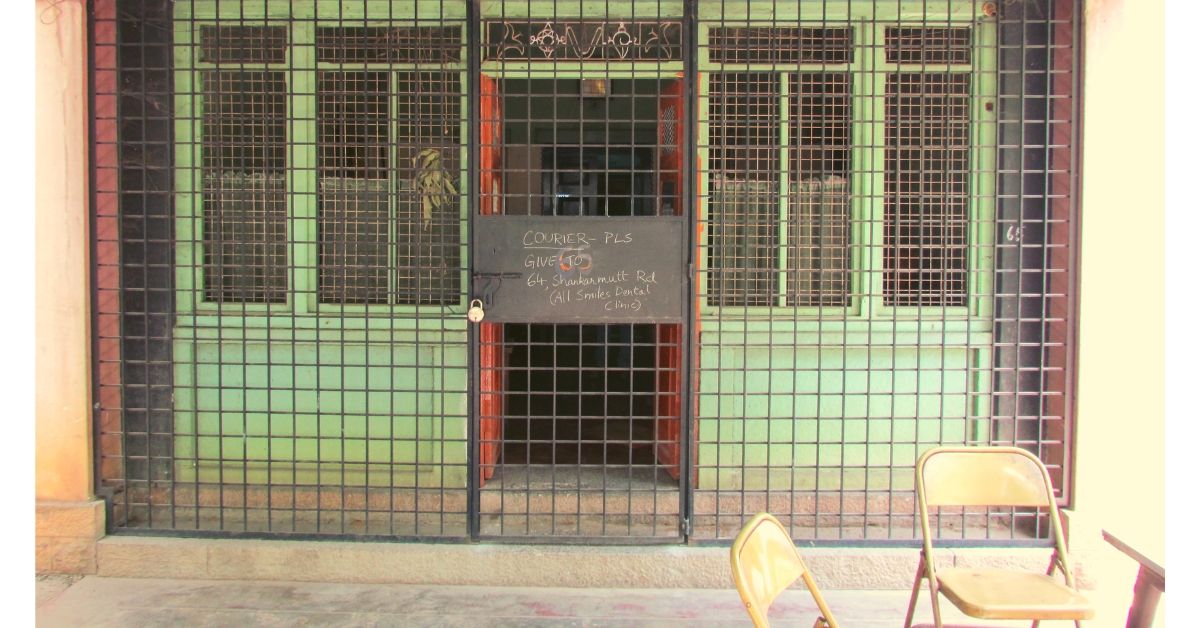
“We made sure that all of it was first checked for quality and durability. Once that was ticked off, we proceeded to transform the shorter doors into windows that gave the entire design a better look and ventilation. For the doors, however, we combined the leftover wood with new teak wood,” Sharath adds.
“Rapid urban expansion is taking a toll on our natural resources. These skewed notions of development floated by glamorous campaigns that make us believe that progress means a mindless increase in infrastructure, without a thought to the environment, is completely flawed. Each one of us needs to get closer to nature and understand that we can’t survive if we deplete natural resources,” adds Shobha, who is a forest rights activist by passion and profession.
Nostalgia served in a new box
Like every home, this one too, came with its own set of quirks.
Decorated with 1920s furniture and surrounded by tall silver oak trees, the place, Shobha says reflects the kind of people they are.

“Our house has always been a place where friends and relatives have gathered for celebrations and get-togethers. My grandmother was known for her generosity, especially in the matter of food. The passion for hosting people and enjoying the small joys in life over simple and elaborate meals continues till today. While the members of the family do like spending time with each other, we all have our own independent lives, and the architecture of the house now reflects this. The ground floor, as well as the first floor of the house, comprise two sections, which can be kept open or completely independent of each other, depending on the privacy needs,” she says.
The house is not just surrounded by greenery, but also has an open to sky internal courtyard- which allows the family to experience the green outside while staying within their private space.
“This does mean that rain splashes onto the living rooms in the house, but that hardly bothers us as we love looking at and smelling the rain even while staying indoors,” she adds.
Sharath adds that the design for the mutram or open-to-sky courtyard at the heart of the house was inspired by well-ventilated houses in rural Chhattisgarh, Kerala and Tamil Nadu.
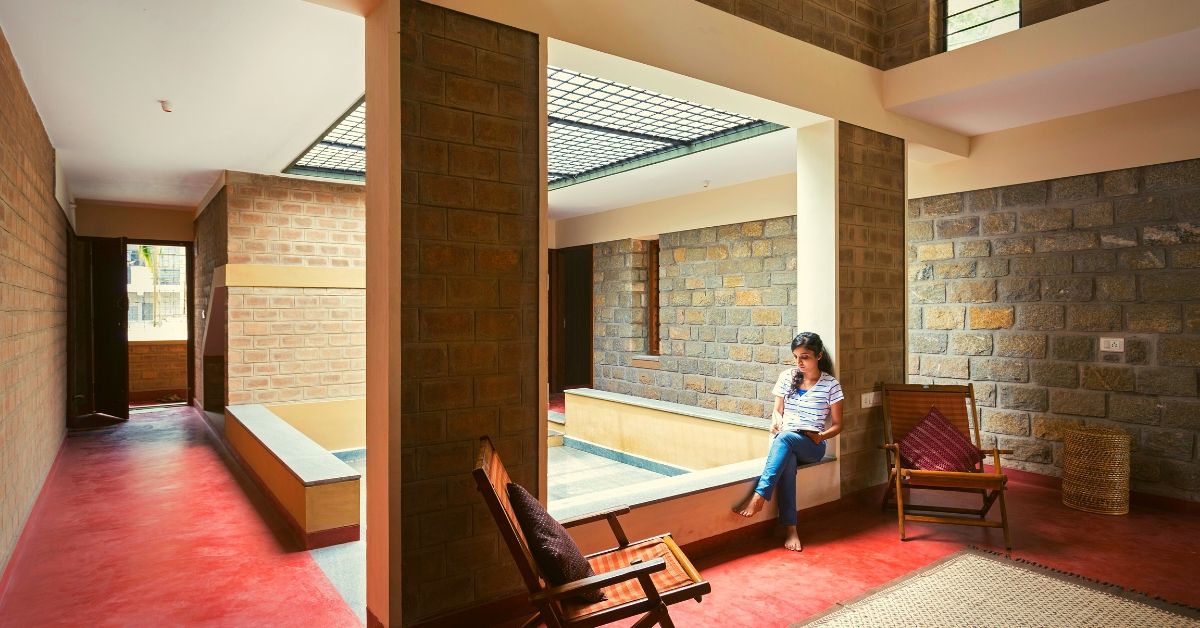
He explains how the design reflects the family’s idea to maintain a balance between the public and private.
“The new design has two levels of 1700 sq ft, housing four units, each of which has its own kitchen, living and dining spaces. Traditional elements such as the ‘tinnai’ (raised platform marking the entrance of the house) and the ‘mutram’ have been integrated into the house as desired by the family. The courtyard is the focal point of each unit, providing light and ventilation to the living spaces that encompass it” he says.
Also Read: Zero Waste to Organic Food: Ahmedabad Lady’s Toxin-Free Home Will Inspire You!
The inspiration for the tinnai, Shobha adds goes back into her childhood, when her grandfather hosted scores of people in their ancestral home in Srirangam, Tiruchirapalli.
‘A happy place where any traveller could stop by for a chat’ was what came to her mind when imagining such a space in the new house. And, the leftover granite stone unearthed from the foundation of the old house, was a perfect fit for cosy stone tinnai (porch/patio).
But like most unique projects, this one was also not devoid of challenges.

“Costs and time delays, owing to procedural delays, was the main challenge. The red oxide flooring was hard to get done, with a shortage of skilled persons who could give it the required finish. Our standards were, of course, set high, given that we used to live in a 100-year-old house in the same location. The floors in that house were amazing, and we miss that. My grandmother used to tell us stories of how the red oxide floors used to be painstakingly polished manually for days on end, in the olden days. It’s a skill that is slowly dying. However, we are happy that we have tried recreating it to the maximum extent possible,” recalls Shobha.
Sharath adds that its high time such a unique project becomes mainstream.
“Although we had to go the extra mile, it was worth it. The project taught us how to create high-quality structures we do not need to go looking for virgin material. Old structures are our untapped resource, and more architects and architecture institutes should look into reusing them sustainability. Sustainable architecture should not be ‘unique’ anymore; it is the need of the hour!” he says.
After months of hard work, the project was finally complete in 2014 and emerged to be the perfect blend of the past, the present and the future!

“Our home doesn’t look shiny and new. We didn’t buy new furniture or splurge on decorating the house. It remains cosy, friendly, and a place that reminds us of my grandmother—simple and playful. A section of the top floor remains a place for creative pursuits like using theatre for talking about issues of social change and human rights. It doubles as my workspace as well as a place where friends can stay over or have a small get-together or celebrations,” she concludes.
(Edited by Gayatri Mishra)
Like this story? Or have something to share?
Write to us: [email protected]
Connect with us on Facebook and Twitter
If you found our stories insightful, informative, or even just enjoyable, we invite you to consider making a voluntary payment to support the work we do at The Better India. Your contribution helps us continue producing quality content that educates, inspires, and drives positive change.
Choose one of the payment options below for your contribution-
By paying for the stories you value, you directly contribute to sustaining our efforts focused on making a difference in the world. Together, let's ensure that impactful stories continue to be told and shared, enriching lives and communities alike.
Thank you for your support. Here are some frequently asked questions you might find helpful to know why you are contributing?


This story made me
-
97
-
121
-
89
-
167




